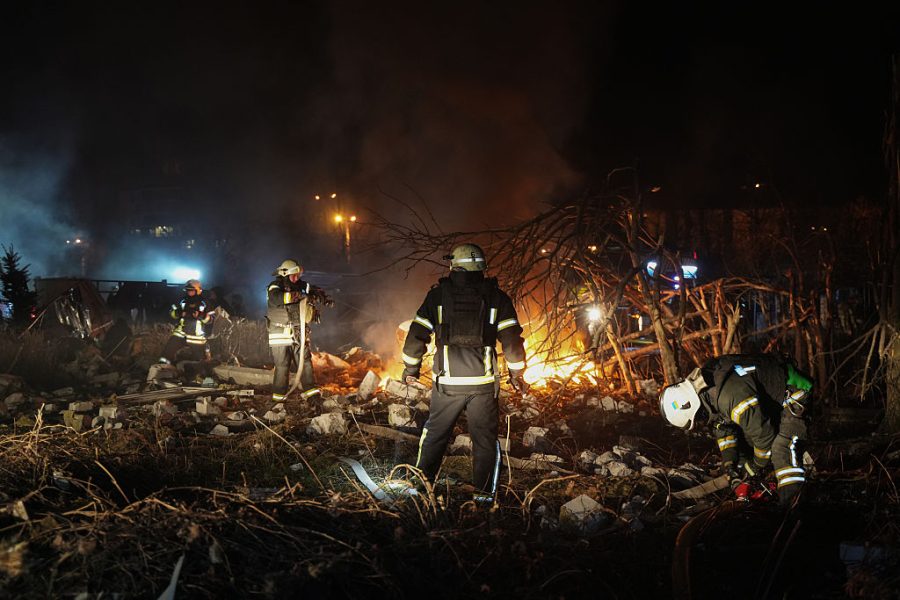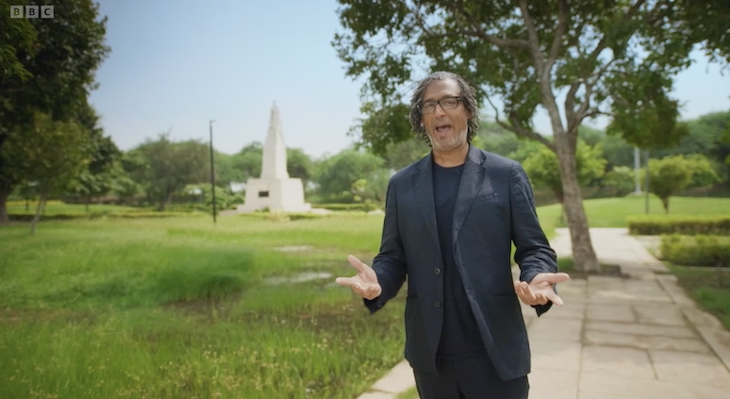Predicting Russian behaviour is a fool’s errand. As a young ‘stringer’ in Kyiv during the dying months of the Soviet Union, I was bemused by the analysis of Western journalists from their elite compounds in Moscow, who saw a very different world to that experienced by those of us in the ‘sticks’.
This deal is little more than a sophisticated Kremlin disinformation campaign
It is with some trepidation then that I write this. While I’m keeping my fingers crossed for the peace deal Ukraine has reportedly agreed to, I fear any ‘agreement’ will prove to be little more than a sophisticated Kremlin disinformation operation, designed to hurt Volodymyr Zelensky when his popularity and battlefield morale are at a particularly low point.
Let’s look at the timing. The Ukrainian President is under pressure from an alleged kickback and embezzlement scandal in the country’s energy sector. Members of his government have been forced to resign. His former business partner Timur Mindich fled Ukraine shortly before authorities attempted to arrest him for his alleged involvement. Zelensky’s political capital is badly drained.
On the battlefield, the small Ukrainian city of Pokrovsk is likely to fall to Russian forces. The Kremlin’s victory will be pyrrhic: taking this small railway junction city will have left some 100,000 Russian soldiers dead or injured over the course of the year. But Vladimir Putin will undoubtedly present it as a great battlefield win. His special military operation will continue to appear ‘on course’. Why, then, is Russia making peace overtures now?
Throughout this war, we have seen Putin’s three-pronged strategy in Ukraine. First, hold the frontline and make grinding progress. Second, destroy Ukrainians’ will to resist by destroying the country’s energy infrastructure. Third, break the link between Ukraine and its Western backers. Putin isn’t entirely ‘winning’, but he is making progress on all fronts.
As I wrote in my book, The New Total War, the first characteristic of Russian warfare is the integration of military and non-military tools of conflict. For Russia, ‘peace’ or ‘ceasefire’ talks – call them what you will – are part of a warfare strategy to reinforce or make new gains. The Kremlin school of negotiation’s style is to intimidate, demand and unsettle in equal measure. Thus far, as the Americans would say, this has been a slam dunk for the Kremlin.
We can see this in the very text of the original 20-point plan drafted by Russia and the US, which is almost certainly translated from an original Russian document. While the US has denied this, the draft reads like a Russian wish-list of demands, some of which would be impossible for the Ukrainians to accede to. Regardless of who leaked the document (Kirill Dmitriev, a Western-educated Kremlin operator, has incidentally tried to pin it on a friend of mine in Odessa) it has ruthlessly blindsided both the Ukrainians and the Europeans.
If Kyiv and its Europeans backers are bounced into giving up Ukrainian land for peace, Putin will have achieved by diplomacy what his armies have failed to achieve by force: the capture of the Donbas. That may be enough for Russia now but that sell-out is still unlikely. Ukraine can’t give up land voluntarily without a referendum and the Europeans would support Ukraine’s continued fight. What’s more, a power-hungry Putin would view ‘peace’ as purely temporary. He would use the pause to re-arm and press on for further territory.
Even if Russia rejects the amended deal, it can still gain in other ways. Leaking the original drafted document has already helped create greater divisions within Ukraine. Civilians are tired. They want peace. They also fear Putin’s intentions. The Russian President, not for the first time, is using public opinion as a weapon against his opponents.
And what of the perception that Ukraine has been sold out by the US? Such an image, regardless of the accuracy, is terrible not only for Ukraine but also for the UK and the EU. Perhaps the true brilliance of this Kremlin operation is the depth of the relationship struck between Putin’s negotiating team and Donald Trump’s – especially the US special envoy Steve Witkoff. The US administration is, at least for the moment, Russia’s get-out-of-jail card.
Perhaps a bad deal can be struck between both sides which at least buys Ukraine time to rest and rebuild. Perhaps Putin’s greed will lead to him rejecting the deal. But, right now, the Russians are the foxes in the chicken coop of international diplomacy. Ukraine’s Western supporters, meanwhile, are little more than sitting prey.







Comments